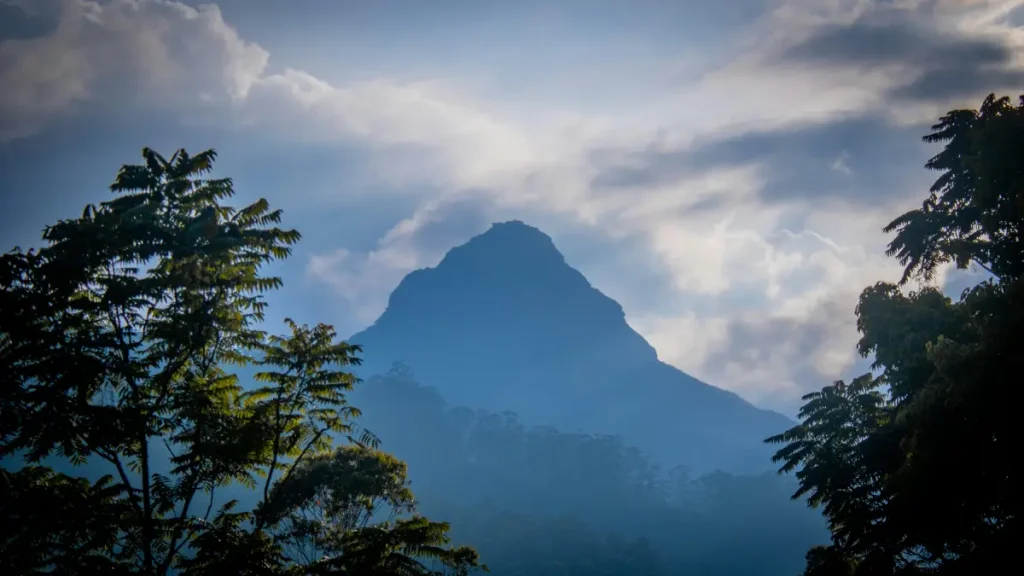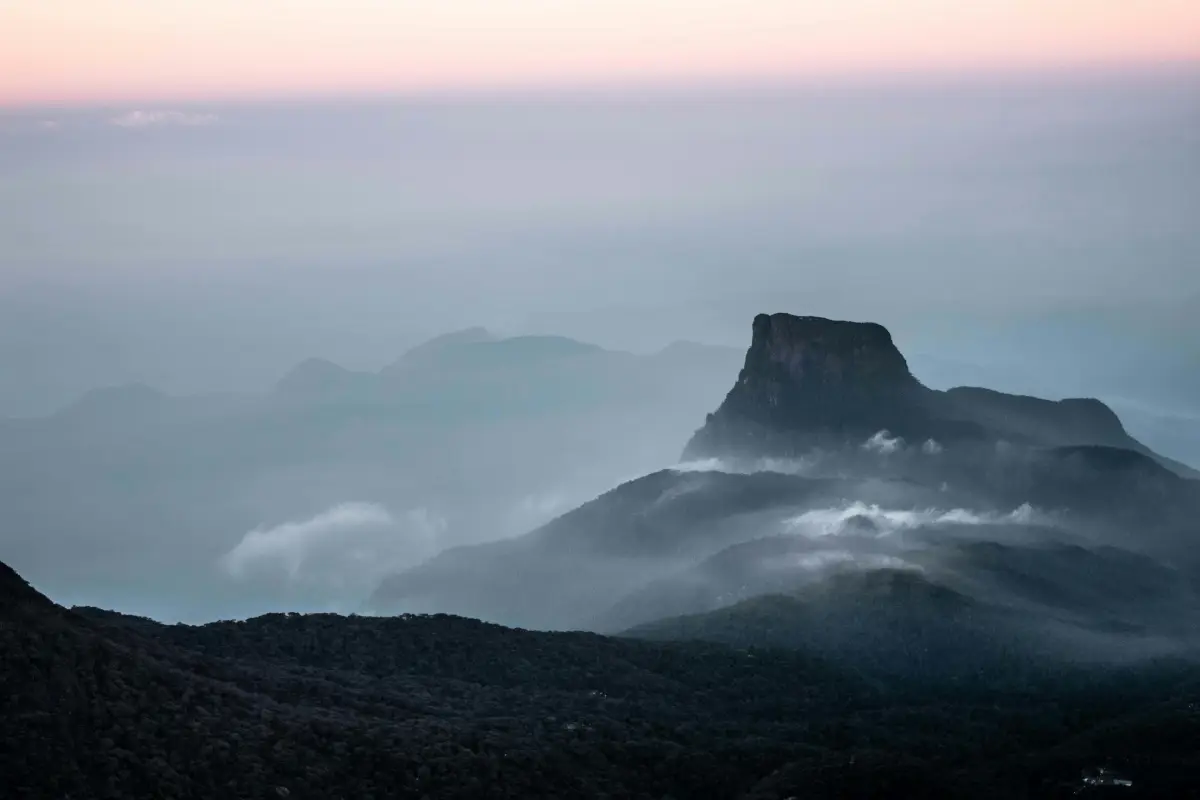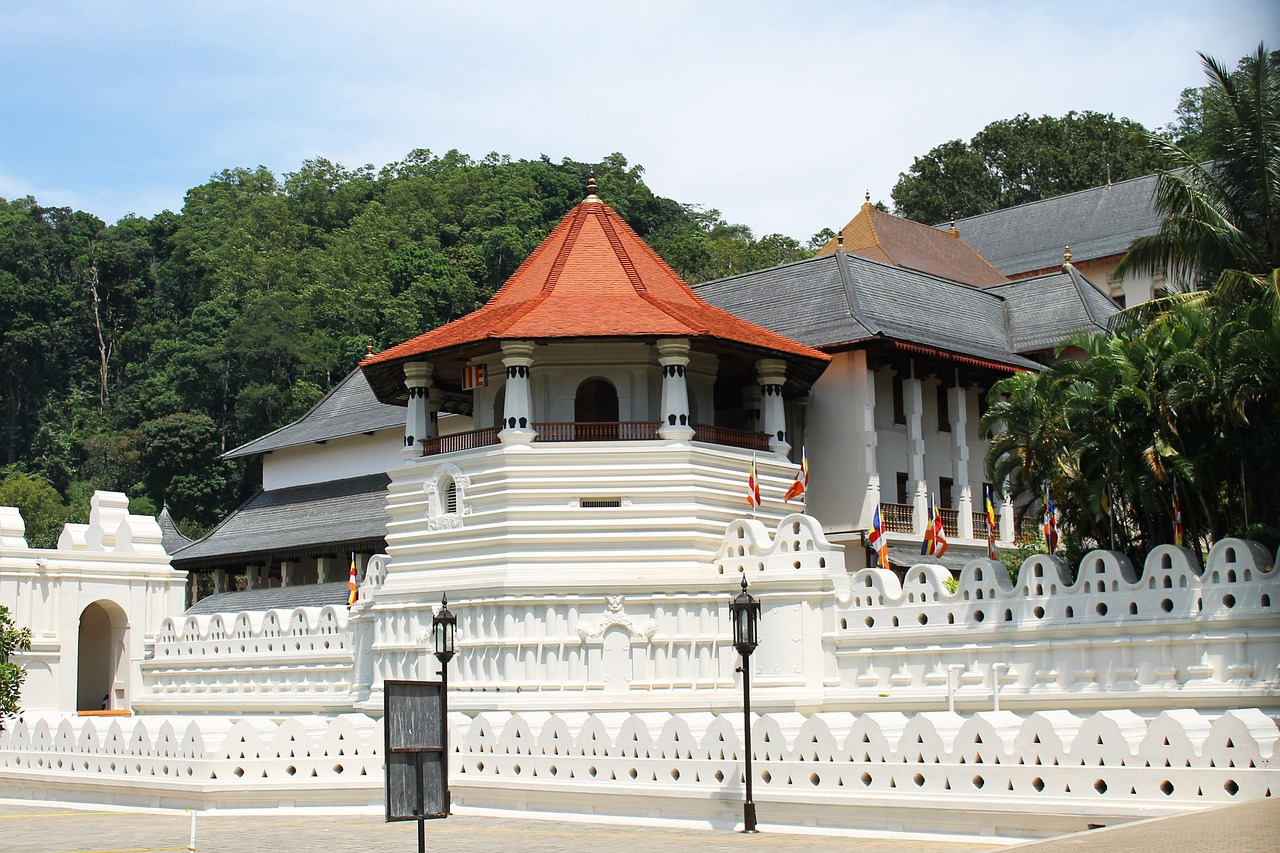A comprehensive guide for travel professionals navigating one of Sri Lanka’s most significant spiritual and adventure destinations. Adam’s Peak The Sacred Summit.
Rising majestically from the misty highlands of central Sri Lanka, Adam’s Peak—known locally as Sri Pada—stands as one of the island nation’s most compelling destinations for travelers seeking both spiritual enlightenment and adventure. At 2,243 meters above sea level, this conical mountain draws hundreds of thousands of pilgrims and trekkers annually, creating a unique convergence of religious devotion, cultural immersion, and physical challenge that few destinations worldwide can match.
For travel professionals, Adam’s Peak represents both an extraordinary opportunity and a complex logistical puzzle. Understanding its multifaceted appeal, seasonal dynamics, and operational challenges is essential for crafting meaningful experiences that honor both the mountain’s sacred significance and clients’ transformative journey expectations.
The Sacred Footprint: Understanding Sri Pada’s Universal Appeal – Adam’s Peak The Sacred Summit
The mountain’s primary draw centers on a distinctive rock formation at the summit—a large depression measuring approximately 1.8 meters in length that resembles a giant footprint. This natural formation has spawned centuries of religious interpretation across multiple faiths, making Adam’s Peak one of the world’s rare truly ecumenical pilgrimage sites.
Buddhist tradition identifies the impression as the footprint of Lord Buddha, left during his third visit to Sri Lanka over 2,500 years ago. According to the Mahavamsa, the ancient chronicle of Sri Lankan history, Buddha placed his foot here while standing on nearby Sumanakuta Peak, creating this sacred mark that would guide future generations toward enlightenment.
Hindu devotees recognize the footprint as belonging to Lord Shiva, calling the mountain Sivanadi Padam. The site holds particular significance in Tamil Hindu tradition, with many Tamil pilgrims from both Sri Lanka and South India making the arduous journey as an act of devotion.
Christian and Islamic traditions attribute the footprint to Adam, the first man according to Abrahamic faiths. Islamic legend suggests Adam was cast down from paradise and landed on this peak, making his first footprint on Earth here. Some Christian interpretations align with this narrative, though others attribute it to Saint Thomas, who allegedly preached in the region.
This religious pluralism creates a unique dynamic for travel professionals. Unlike many pilgrimage sites that serve primarily one faith community, Adam’s Peak attracts an extraordinarily diverse pilgrim population. During peak season, Buddhist monks in saffron robes climb alongside Hindu devotees carrying offerings, while Muslim families and Christian groups share the same challenging path to the summit.
Seasonal Dynamics: The Critical Success Factor
Understanding Adam’s Peak’s seasonal patterns is absolutely crucial for travel professionals. The pilgrimage season runs from December through April, coinciding with Sri Lanka’s dry season and the Poya holidays that mark significant Buddhist calendar events. This period sees the mountain transform from a challenging wilderness trek into a well-organized pilgrimage route with illuminated paths, rest stations, and round-the-clock activity.
During pilgrimage season, the mountain operates almost like a vertical city. Tea stalls and small shops line the route, selling everything from energy drinks and snacks to religious paraphernalia and warm clothing. Rest stations provide brief respite for weary climbers, while donation boxes and volunteer organizations offer support to those in need. The path becomes a river of humanity, with thousands making the ascent nightly.
The off-season, from May through November, presents an entirely different experience. Monsoon rains make the climb treacherous and often impossible. Most facilities close, the illuminated path goes dark, and the mountain returns to its wild state. While some experienced trekkers attempt off-season climbs, this is generally not recommended for mainstream tourism due to safety concerns and the reduced cultural experience.
This seasonal binary creates both opportunities and constraints for tour operators. Peak season offers the full cultural immersion experience but requires careful crowd management and realistic expectation setting. Off-season visits might appeal to hardcore adventure seekers but lack the spiritual atmosphere that makes Adam’s Peak truly special.
The Physical Challenge: More Than Just a Hike
While Adam’s Peak isn’t technically demanding in terms of rock climbing or specialized equipment, the physical challenge should not be underestimated. The standard route involves approximately 5,500 steps carved into the mountainside, with an elevation gain of roughly 1,200 meters over a distance of about 7 kilometers.
Most pilgrims begin their ascent between midnight and 2 AM, aiming to reach the summit before dawn to witness the spectacular sunrise and the mountain’s famous shadow phenomenon. This timing means climbers are tackling the most strenuous portion of the climb in complete darkness, often in crowded conditions, after limited sleep.
The stepped path, while safer than a natural trail, creates its own challenges. The uneven stone steps, many worn smooth by centuries of use, can be treacherous when wet from dew or rain. The constant upward stepping motion stresses different muscle groups than typical hiking, often causing unexpected fatigue even for experienced trekkers.
Temperature variations add another layer of complexity. Starting points at the base can be warm and humid, while the summit often experiences near-freezing temperatures in the pre-dawn hours. Pilgrims must be prepared for dramatic temperature swings and potentially harsh weather conditions at altitude.
For travel professionals, this physical reality necessitates thorough client preparation and realistic expectation management. Clients should understand they’re committing to 6-8 hours of continuous physical exertion, often in challenging conditions, with limited opportunities for rest or retreat once the ascent begins.
Cultural Immersion: The Real Value Proposition
Beyond its physical and spiritual dimensions, Adam’s Peak offers unparalleled cultural immersion opportunities. The pilgrimage season creates a temporary society on the mountainside, where traditional Sri Lankan hospitality, religious devotion, and communal support systems operate in remarkable harmony.
Witnessing the dedication of elderly pilgrims who climb barefoot, families carrying young children, and disabled individuals refusing assistance creates profound emotional impacts that extend far beyond typical tourism experiences. The mountain becomes a leveling ground where social hierarchies dissolve in the face of shared physical challenge and spiritual purpose.
The support systems that emerge during pilgrimage season reveal authentic Sri Lankan cultural values. Strangers offer assistance without expectation of reward, tea stalls provide free drinks to those in need, and communities along the route organize volunteer services. This authentic cultural exchange often becomes the most memorable aspect of the experience for international visitors.
Religious ceremonies at the summit add another dimension of cultural authenticity. Buddhist chanting, Hindu prayers, and Muslim supplications often occur simultaneously, creating a unique atmosphere of shared reverence despite different faith traditions. For many visitors, witnessing this religious harmony provides insights into Sri Lankan society that wouldn’t emerge through conventional tourism activities.
Logistical Considerations for Tour Operators
Successfully managing Adam’s Peak experiences requires careful attention to numerous logistical details. Transportation represents the first challenge, as the mountain’s remote location requires coordination between different transport modes and careful timing to align with optimal climbing windows.
Most climbers start from Dalhousie (also called Nallathanniya), the primary access point located about 6 kilometers from the base of the mountain. Road access to Dalhousie involves narrow, winding mountain roads that can be challenging for large vehicles. Alternative starting points include Ratnapura and Kuruwita, but these involve longer, more difficult climbs.
Accommodation near the mountain fills up quickly during peak season, particularly around significant religious holidays. Options range from basic guesthouses in Dalhousie to more comfortable hotels in nearby Hatton or Nuwara Eliya. Booking accommodation well in advance is essential, and backup options should always be prepared.
Equipment recommendations must balance practical necessity with the reality that most pilgrims climb with minimal gear. Essential items include sturdy footwear with good grip, warm layers for the summit, water, snacks, and flashlights or headlamps. Many pilgrims climb barefoot as a mark of devotion, but this isn’t recommended for first-time visitors unfamiliar with the route.
Medical considerations deserve special attention. The physical demands of the climb, combined with altitude effects and temperature variations, can trigger health issues even in normally healthy individuals. Having basic first aid supplies and understanding evacuation procedures becomes crucial, particularly given the remote location and limited emergency services access.
Marketing Adam’s Peak: Positioning for Different Segments
The mountain’s diverse appeal allows for sophisticated market segmentation, but each segment requires different positioning and service approaches. Understanding these distinctions helps travel professionals craft more effective marketing messages and operational plans.
Spiritual seekers represent the most obvious market segment, drawn by the mountain’s religious significance and transformative potential. This segment values authentic experiences over luxury amenities and often seeks deeper cultural understanding rather than simple sightseeing. Marketing to this segment should emphasize the pilgrimage tradition, religious significance, and opportunities for personal reflection.
Adventure travelers form another significant segment, attracted by the physical challenge and dramatic summit experience. This group typically has higher fitness levels and outdoor experience but may lack cultural context. Educational components about local traditions and religious significance can enhance their experience while ensuring respectful behavior.
Cultural enthusiasts seek authentic insights into Sri Lankan society and traditions. The pilgrimage season offers exceptional opportunities for cultural exchange and observation of traditional practices. This segment often values photographic opportunities and storytelling potential alongside the physical experience.
Luxury travelers present unique challenges for Adam’s Peak experiences. The mountain’s rustic nature and physical demands don’t align easily with luxury travel expectations, but creative packaging can make it accessible. This might involve premium transportation, private guides, superior accommodation, or post-climb spa treatments to balance the challenging experience.
Safety and Risk Management
Adam’s Peak presents several safety considerations that professional tour operators must address comprehensively. The most obvious risks involve the physical demands of the climb, but weather, crowds, and altitude effects also require attention.
Crowd management during peak season creates significant safety challenges. Narrow sections of the path can become bottlenecks with hundreds of people trying to pass simultaneously. Understanding crowd patterns and timing can help avoid the worst congestion, but operators must prepare clients for potentially claustrophobic conditions.
Weather changes rapidly at altitude, and summit conditions can become dangerous quickly. Even during the dry season, sudden temperature drops, high winds, or unexpected precipitation can create hazardous conditions. Having contingency plans and clear decision-making protocols helps manage these risks effectively.
Medical emergencies on the mountain require special consideration due to the remote location and limited evacuation options. Basic first aid training for guides, clear communication protocols, and established relationships with local medical facilities become essential operational elements.
The nighttime ascent adds complexity to safety management. Limited visibility, fatigue effects, and unfamiliar terrain increase accident risks. Proper lighting equipment, trained guides familiar with the route, and clear safety briefings help mitigate these concerns.
Economic Impact and Community Relations

Adam’s Peak generates significant economic activity for surrounding communities, creating both opportunities and responsibilities for tour operators. Understanding these dynamics helps build sustainable business relationships while contributing positively to local development.
The pilgrimage season brings massive economic benefits to the region through accommodation, food service, transportation, and small retail operations. Many local families depend on this seasonal income, making responsible tourism practices particularly important for community welfare.
Employment opportunities during pilgrimage season include guides, porters, tea stall operators, accommodation staff, and transportation providers. Tour operators who prioritize local employment and fair wages contribute directly to community economic development while often receiving superior service and local knowledge in return.
Environmental impact management requires ongoing attention due to the volume of visitors and the fragile mountain ecosystem. Waste management, path maintenance, and conservation efforts need support from both operators and visitors to ensure long-term sustainability.
Building relationships with local communities, religious organizations, and government agencies creates mutual benefits and smoother operations. These relationships often prove invaluable when dealing with unexpected challenges or seeking special accommodations for clients.
Best Practices for Client Preparation
Successful Adam’s Peak experiences require thorough client preparation covering physical, mental, and cultural aspects. This preparation often determines whether clients view the experience as transformative or merely endured.
Physical preparation should begin weeks before the climb, focusing on cardiovascular fitness and leg strength. Stair climbing, hiking with elevation gain, and general endurance training help clients manage the physical demands more effectively. Setting realistic expectations about the difficulty level prevents disappointment and potential safety issues.
Cultural preparation enhances the experience significantly while ensuring respectful behavior. Educating clients about the religious significance, appropriate conduct, and local customs helps them appreciate the cultural context and interact appropriately with pilgrims and locals.
Equipment preparation involves balancing necessity with practicality. Detailed packing lists, equipment testing recommendations, and guidance on local purchase options help clients arrive properly prepared without overpacking.
Mental preparation addresses the challenging aspects of the experience while building anticipation for the rewards. Discussing the nighttime climb, crowd conditions, physical discomfort, and weather possibilities helps clients develop appropriate expectations and coping strategies.
The Summit Experience: Managing the Climax
The summit experience represents the culmination of hours of effort and the primary reason for undertaking the challenge. Managing this experience effectively requires understanding both its natural elements and cultural dynamics.
The sunrise from Adam’s Peak is genuinely spectacular, weather permitting. The mountain’s isolated position and significant elevation create panoramic views across central Sri Lanka, with the shadow of the peak creating a perfect triangular projection on the western landscape as the sun rises. This shadow phenomenon, visible only from the summit during sunrise, creates a magical moment that justifies the arduous climb for many visitors.
Religious ceremonies at the summit vary depending on the day and the composition of pilgrims present. Buddhist rituals might include chanting, meditation, and offerings, while Hindu ceremonies could involve prayers, offerings, and ritual activities. Understanding and respecting these ceremonies while helping clients participate appropriately enhances the cultural experience.
Photography opportunities abound, but operators should educate clients about appropriate conduct around religious activities. Some ceremonies or individual prayer moments should not be photographed, while other aspects of the summit experience offer excellent documentation opportunities.
The descent often proves more challenging than anticipated, as tired legs and post-euphoria energy crashes combine with daylight exposure of the path’s steepness. Managing client energy, maintaining group cohesion, and providing support during the descent requires as much attention as the ascent.
Conclusion: Adam’s Peak as Transformative Tourism
Adam’s Peak represents tourism at its most transformative potential. The combination of physical challenge, spiritual significance, cultural immersion, and natural beauty creates experiences that often profoundly impact visitors long after they return home. For travel professionals, this mountain offers the opportunity to facilitate genuinely meaningful experiences that justify the complexities of its logistics and challenges.
Success with Adam’s Peak requires understanding its multifaceted nature and preparing comprehensively for its demands. The mountain rewards thorough preparation, respectful approach, and realistic expectation management with experiences that clients often describe as life-changing.
As sustainable tourism becomes increasingly important, destinations like Adam’s Peak that offer authentic cultural exchange, community economic benefits, and personal transformation represent the future of meaningful travel. For professional travel planners willing to invest in understanding its complexities, Adam’s Peak offers the rare opportunity to create experiences that satisfy clients’ deepest travel motivations while contributing positively to The sacred footprint at Sri Pada’s summit has guided pilgrims for over two millennia. For contemporary travel professionals, it can serve as a powerful reminder that the most rewarding destinations often require the greatest commitment to understanding, preparation, and respect for local traditions and natural environments.


